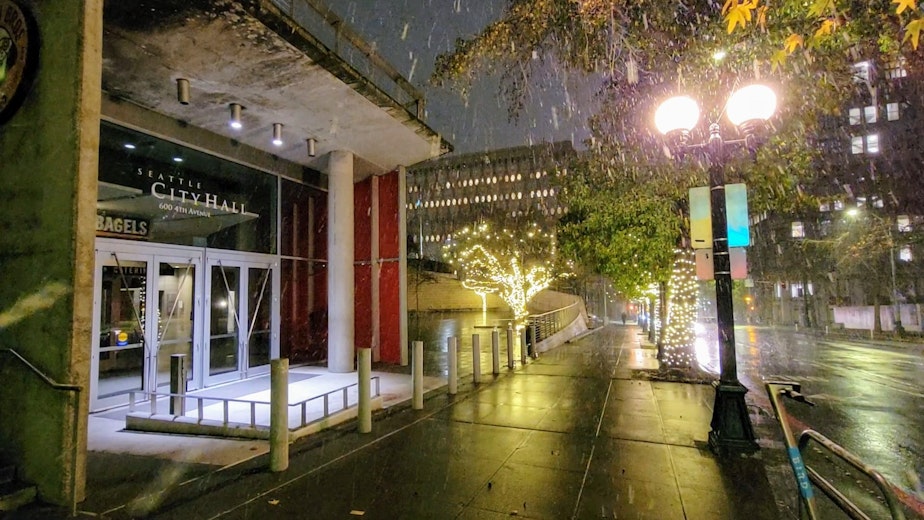How a cold snap exposed cracks in King County's emergency response shelter system

This month’s cold snap did more than just ice over roads and knock out power — it also revealed holes in King County and Seattle’s cold weather emergency response system.
The King County Medical Examiner’s Office has confirmed that seven people died of hypothermia between Jan. 11 and Jan. 17. Of those people, four were experiencing homelessness.
As KUOW’s Casey Martin reported, one of those individuals was 63-year old Jay Matthew Anderson. He died outside the Seattle Library’s Ballard branch. And he was found in the car he lived in with his dog, Frankie.
Before the cold weather rolled in though, agencies like the King County Regional Homelessness Authority began activating their severe weather protocols.
"What happened from there is sort of a staggered approach where initially, the King County Regional Homelessness Authority said they would open 173 additional shelter beds," said Anna Patrick, a reporter on the The Seattle Times' Project Homeless team.
Sponsored
As the shelters filled up, the agency added an additional 180 spots to try and get more people inside, Patrick added. But not every city in King County has a contract with King County Regional Homelessness Authority to run severe weather shelters, which left some unhoused county residents without shelter.
"What that means is that cities on their own have to decide to open extra shelter or space," Patrick said. "And so when the King County Regional Homelessness Authority decided to activate these protocols before the Martin Luther King weekend, they have to contact every other city in the county and say, 'Hey, we're activating. Are you going to activate?'"
Out of the 39 cities in King County, only six decided to activate severe weather shelters. In some of those cities, churches like Burien's Highline United Methodist Church filled the gaps by running emergency shelters.
Patrick said outreach workers have told her it may be time to reconsider how severe weather shelters are operated when thinking ahead to the next time there's a cold snap.
"One of the reasons that I've heard ... as to why some people might not utilize the severe weather shelters is that most of them are only open at night, so that means you get there at 7 p.m.," Patrick said. People are expected to leave by 7 o'clock the next morning, and "that means you're back on the street, right in the cold, trying to figure it out, carrying all your belongings and such until you can get back into a shelter at night."
Sponsored
Instead, service providers think it may be more helpful if people could keep their belongings in a severe weather shelter during the wintertime, and maintain a designated go-to spot for when extreme weather hits.
Listen to Soundside's full interview with Anna Patrick by clicking the play icon at the top of this story.





